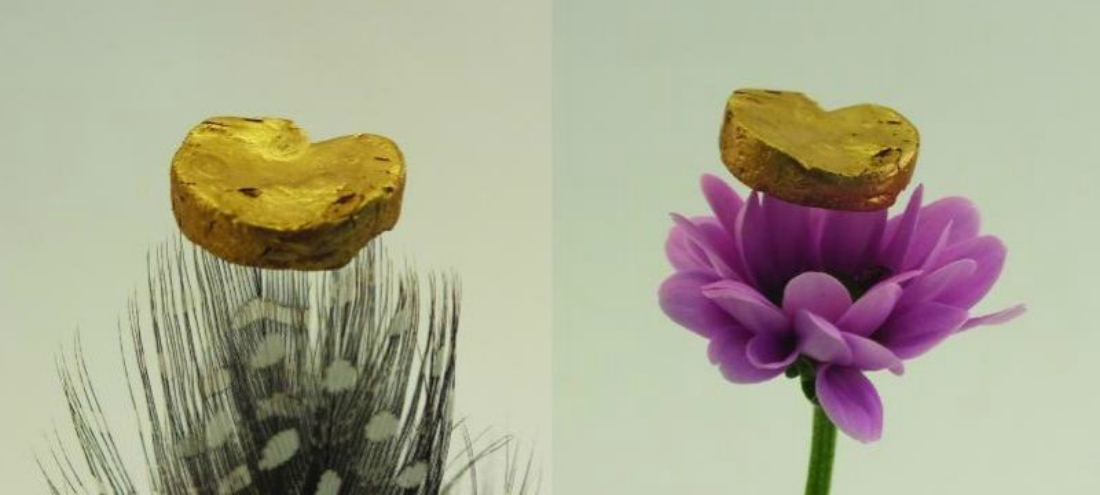
The Breakthrough
Researchers in Switzerland have been able to produce gold foam that is almost as light as air. In fact, 98% of it consists of air; the rest is made up of 20-carat gold and milk protein. According to materials scientist Raffaele Mezzenga from ETH Zurich, this gold aerogel is a thousand times lighter than any other gold alloy, is lighter than water, and is almost as light as air itself.
Of the 2% of the aerogel that isn’t air, more than four-fifths of it is gold; the rest is nanometer-fine strings of milk proteins that were heated to produce amyloid fibrils (peptide or protein aggregates). Mixing this into a solution of gold salt, the fibers formed a basic structure, with the gold particles crystallizing around it. The resulting solution was then dried using a long and delicate process called “supercritical drying,” interestingly, it’s the same method used to decaffeinate coffee.
The team also determined that they could alter the colour by adding smaller particles of gold to the solution. “When we change the reaction conditions in order that the gold doesn’t crystallise into microparticles, but rather smaller nanoparticles, it results in a dark-red gold,”said team member Gustav Nyström.

The Implications
During the drying process, the researchers discovered that, by adding gold nanoparticles instead of microparticles, a dark-red gold aerogel would form. Altering the properties of the aerogel also enabled the researchers to adjust the material’s rate of absorption and reflection.
Ultimately, it has a number of potential applications, such as a chemical catalyst and as building material for tiny pressure sensors. “At normal atmospheric pressure the individual gold particles in the material do not touch, and the gold aerogel does not conduct electricity,” says Mezzenga. “But when the pressure is increased, the material gets compressed and the particles begin to touch, making the material conductive.”
